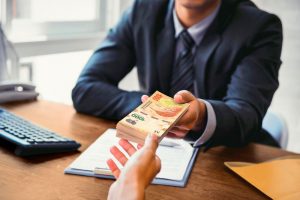Foreign Trade in Argentina
Mercosur
On 1 January 1995 began operating the Mercosur, a zone of free trade between the Argentina, Brazil, Paraguay and Uruguay.
Customs Union imperfect, was implemented within the Mercosur, in order to reach the Common Market. In the case of Argentina and Brazil, the two largest economies in the Mercosur, the adequacy regime introduced a calendar, in which tariffs will be gradually reduced. This stage lasts until 2000, when the rates and exemptions are eliminated to Common External Tariff, which remained in the regimen.
Thus began another stage of the Customs Union which also has some exceptions such as sugar and automobiles that have a special regime. While the Common External Tariff, provides some temporary exceptions, such as Capital Goods, Informatics and Telecommunications.
In Argentina, during the year 1995 has managed to reverse the deficit in the previous year to 5,800 million. While exports amounted to 17.503 million, imports were 16.432 million. The surplus was therefore 1,071 million.
Between 1998 and 2002 occurs: the decline of the neoliberal government of Carlos Menem; the end of convertibility for which 1 peso equaled one US dollar, and the financial corralito. During this period, exports are around 25,000 million.
In the 2003 with the implementation of new economic policies, the export volume happens to 31,511,000 dollars. In 2008 it reached 68.658 million dollars, suffering a fall in 2009, an election year, in going down to 56,555 then reach 84.295 million dollars in 2011.
The result of the 25 years of the Mercosur highlight the interdependence between the four countries where the principal asset of the Block has been its regional market.
The growth of intra-regional trade rises of 7% in the late 80’s, and 30% in the 2013 . But also it becomes more important because it is 60% of manufactured goods with high added value; as opposed to 70% of primary products and manufactures of low added value, which is exported to other destinations.
The higher level of industrialization of Brazil, which together with other asymmetries, generated tension with Argentina.
With regard to the automotive industry, mostly foreign carmakers argue the need to operate in an extended but regulated market. The domestic auto parts industry grew markedly alongside the automotive development.
The Argentina could be at a disadvantage, with the completion of regime that sets a counter trade, import and export of vehicles to enjoy the tariff 0.
Out of 10 cars that Argentina exported 9 target the Brazilian market. Automakers could end up moving to Brazil, South America’s largest economy, to supply from there, the entire region. Specifically the 10 automotive plants that have opened in the Mercosur since 1998, no one took root in Argentina.
Which products are Exported by Argentina
Manufactures of Agricultural Origin
Among the main products exported by Argentina, you are the Manufactures of agricultural origin, totaling 30.059 million dollars, which accounted for 36.2% of total exports in 2013. It stands within MOA decreasing importance in the Residues and waste from the food, Fats and oils, and prepared meats and dairy products.
Industrial Manufactures
Exports of Articles of industrial origin, whose volume is exported 28.413 million dollars, constituting 34.2% of exports in 2013. Within this group, are: Road transport materials, chemicals and related products. Next in export volume is common metals and articles thereof, machinery, electrical equipment, stones, precious metals and articles thereof, currencies.
Primary Products
Third in sales of $ 19,302,000, corresponding to the Primary Products, which make up 23.3% of total exports. The main commodities are: cereals whose exports were 6% below 2012; followed in importance seeds and oleaginous fruits; Ores, slag and ash which has a drop of 33% compared to 2012, unprocessed fish and seafood and fresh fruits.
Fuels and Energy
The fourth and last group of fuels and energy, with 5.252 million dollars, which has a drop of 24% compared to 2012 and is equivalent to 6.3% of exports. They dominate the fuel and crude oil group.
Where exports Argentina
The main destination of Argentina, for their exports during 2013 was the Mercosur. With 22.557 million dollars representing 27.8% of total sales in the country. The most prominent was the category of Manufactures of Industrial Origin.
The second most important destination is the European Union, the third NAFTA.
Among other export destinations is: Chile, Rest of ALADI, ASEAN, China, Rep. Korea, Japan, India, Middle East, Maghreb and Egypt.
Which products are Imported in Argentina
Intermediate Goods
Argentina imported in 2013, Intermediate Goods by 19.573 million dollars, equivalent to 26.5% of imports; basically comprised of: Industrial Supplies made no specified elsewhere. Parts and accessories for capital goods:
During the 2013 Parts and accessories for capital goods were imported 15.419 billion dollars 7% more than in 2012.
Capital Goods
The import of capital goods amounted to US $ 12.767 million, up 8% from 2012. This category consists mainly of capital goods excluding transportation equipment
Fuels and Lubricants:
Fuels and lubricants were imported in 2013 by 11.415 million dollars 23% more than 2012.
Consumer Goods
In 2013 consumer goods were imported 7.508 million dollars, of which approximately 41.4% of this group, is represented by non-durable consumer items not elsewhere specified.
Passenger Motor Vehicles
Passenger motor vehicles imported in 2013 to 7.096 billion dollars, representing 32% more than imports in 2012.
From which Countries, makes Imports Argentina
The main origin of Argentine imports, is the Mercosur, to 20.586 million dollars representing 27.8% of imports. The main item of Intermediate Goods was followed by passenger motor vehicles.
Next in importance the EU, China and Nafta Union.
Trade Balance
In 2012 export sales amounted to 80.927 million dollars, with a surplus of 12.419 million dollars. In 2013 exports amounted to 83.026 million dollars, Argentina’s trade balance is a surplus of 9.024 million dollars, which is 27.3% lower than in 2012. (INDEC)
The biggest deficit in bilateral relations with China and it was 5.033 million dollars.





